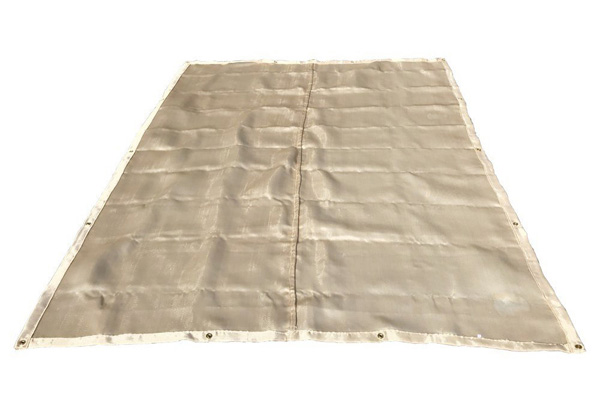Welding blankets are indispensable heat-resistant materials that serve as protective shields, safeguarding both the welder and the surrounding environment from sparks and splatter. It is crucial to prioritize safety during welding work to prevent potential damages and ensure the well-being of workers.
Materials Used in Welding Blankets: Welding blankets can be crafted from various materials, each offering unique benefits. Fiberglass, a popular choice, is produced by filtering melted glass through bushings, resulting in a flexible fiber with remarkable resistance to high temperatures. Other materials used include vermiculite, silicate, polyurethane, aluminum paper, graphite, and clay.
These blankets not only shield against fire and heat during welding but also find applications in grinding, cutting, and other heat-intensive activities. Additionally, they can serve as effective insulation for grills during colder weather, helping maintain heat and reduce fuel consumption.
Considerations When Choosing Welding Blanket Materials: Several factors should be considered when selecting the appropriate welding blanket for specific applications:
Working Temperature: Determine the highest temperature the material can resist to ensure compatibility with your welding projects.
Type of Metal Fusion: Consider the metal fusion process involved and the specific type of metal being used (e.g., stainless steel, iron, copper, aluminum, metal alloys).
Splash Type and Projection Reach: Assess the type of splashes generated and how far they project during welding.
Flame-Retardant Properties: Ensure the chosen material possesses excellent flame-retardant properties to prevent damage. Verify the materials used and check for resistance to heat.
Composition: Check the composition of the material, avoiding harmful components like asbestos and assessing the presence of polyurethane, vermiculite, silicate, clay, or graphite.
Size: Choose a blanket size that adequately covers your work area. Consider personal preference and project requirements.
Comfort: Some materials, such as fiberglass, may feel coarse. Consider softer materials if you have sensitive skin, and keep in mind that stiff materials can be challenging to roll.
Common Welding Blanket Materials:
Black Slag: Suitable for tough welding jobs, resisting molten splatters with temperatures up to 3000 degrees Fahrenheit and abrasions.
Vermiculite: Withstanding temperatures of 1500 to 2000 degrees Fahrenheit, ideal for vertical applications, offering protection from heat, sparks, and medium levels of sandblasting and grinding.
Aluminum Fiberglass: Reflective and capable of withstanding temperatures up to 1000 degrees Fahrenheit, often used when heat reflection is needed.
Silica: Ideal for heavy-duty jobs, protecting against slags and molten splatters, with a high molten point of 2300 degrees Fahrenheit.
Acrylic: Suitable for light welding materials, fire retardant, and effective as a welding barrier.
